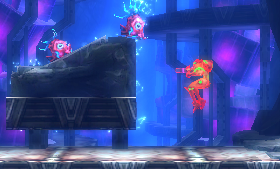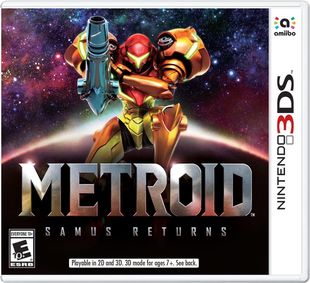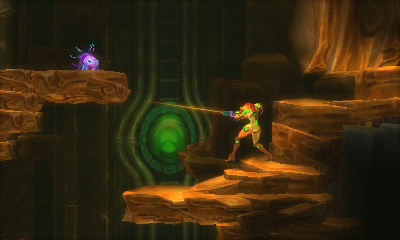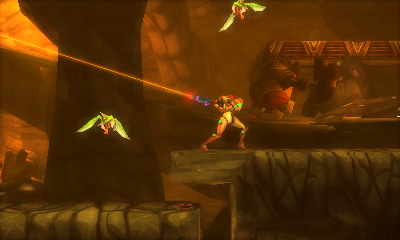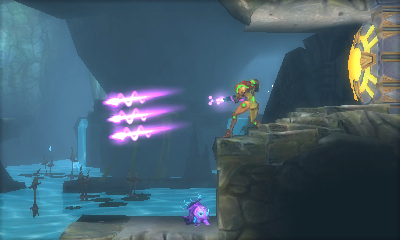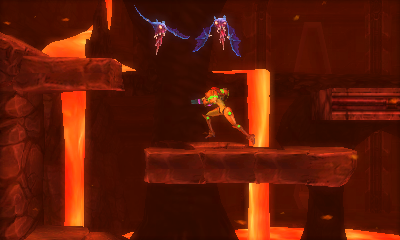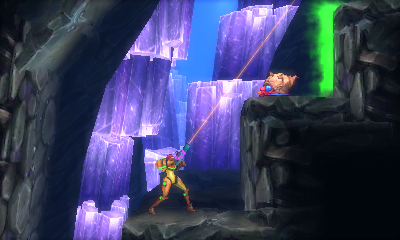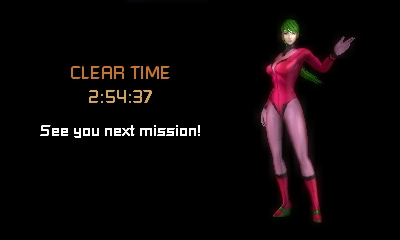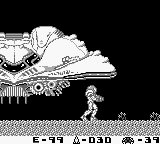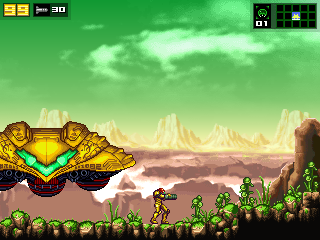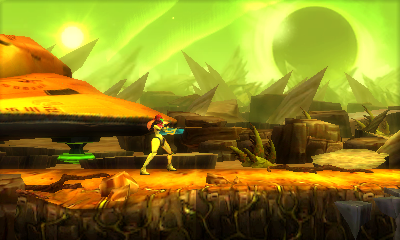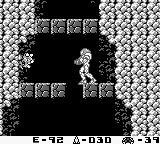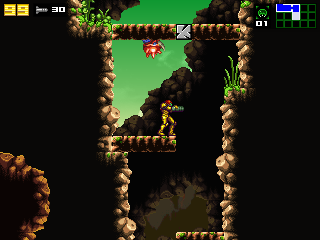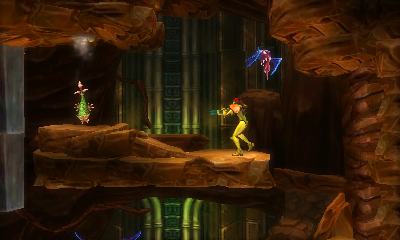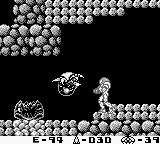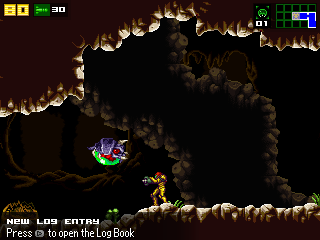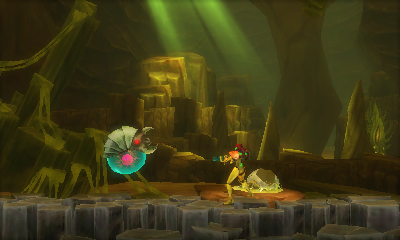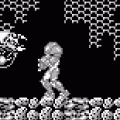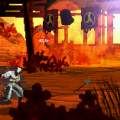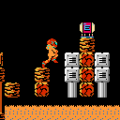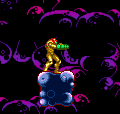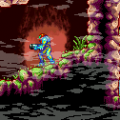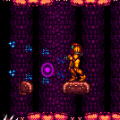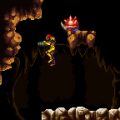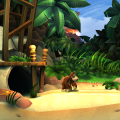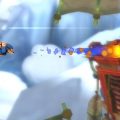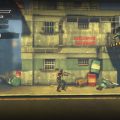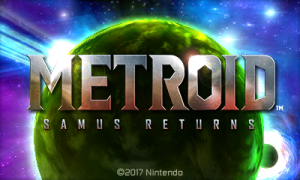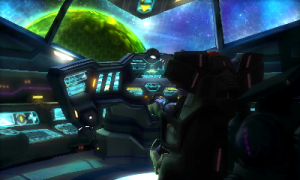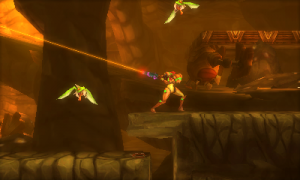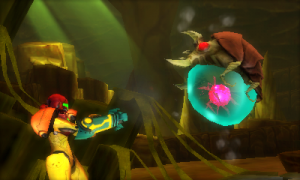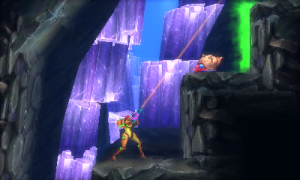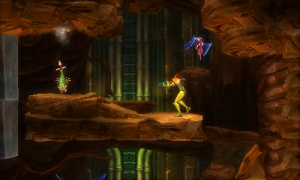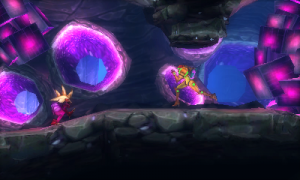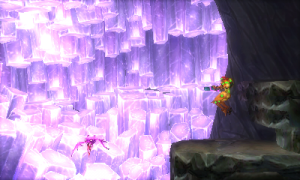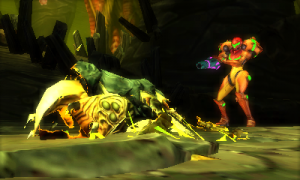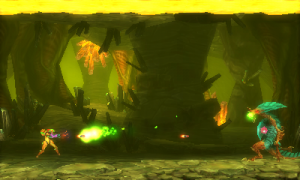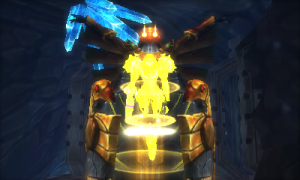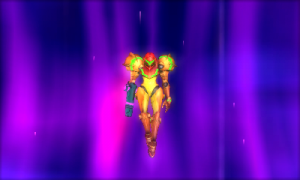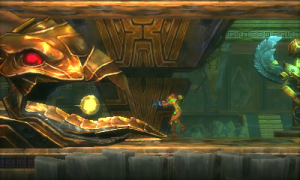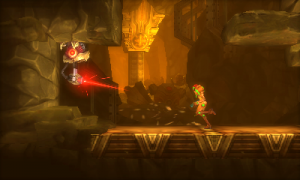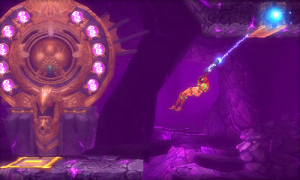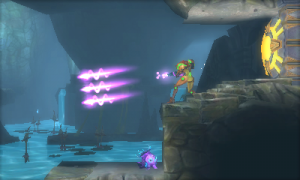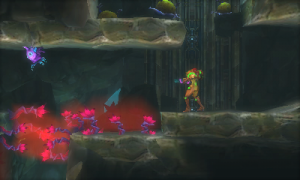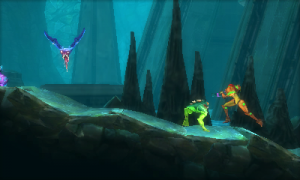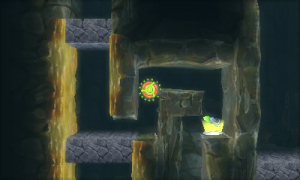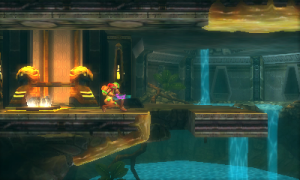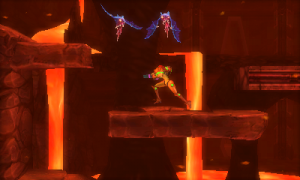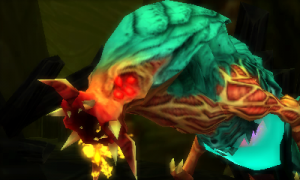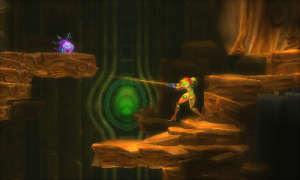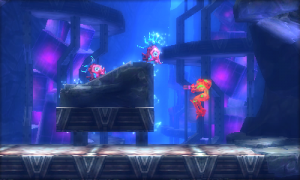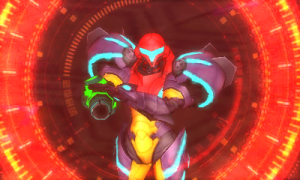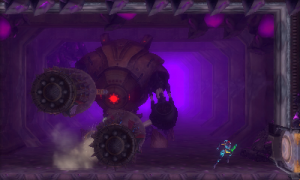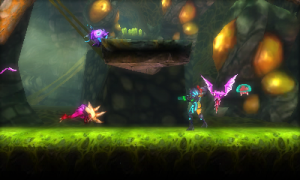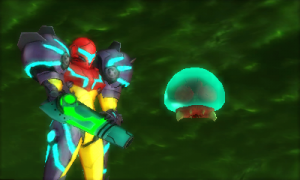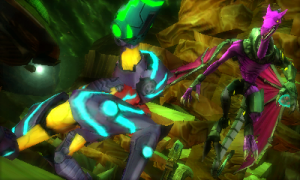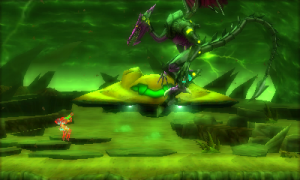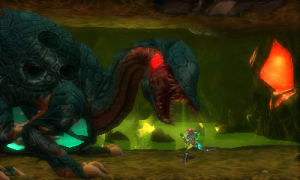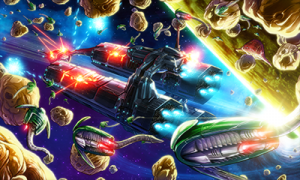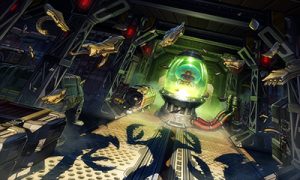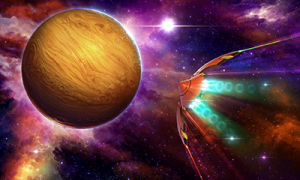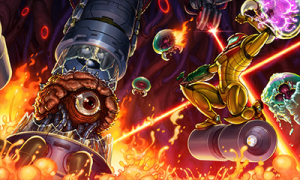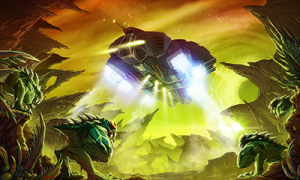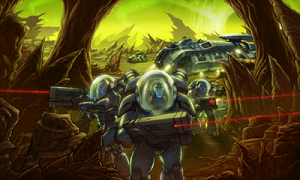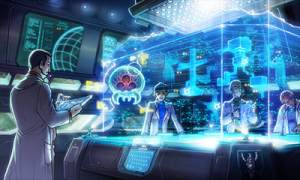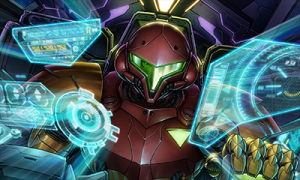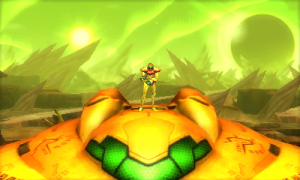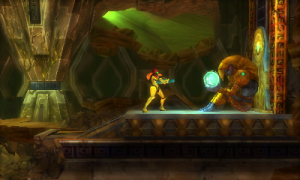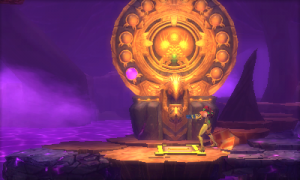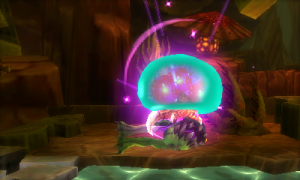In 2016, the Metroid franchise was in a bad place. The series seemed all but killed off thanks to the poorly received Metroid: Other M for the Wii, and when Nintendo did bring it to the 3DS, it was as a squad based shooter, Metroid Prime: Federation Force, a game that almost no one actually wanted. While the fanmade Metroid II remake, AM2R, was hugely welcomed by fans, it was also taken at the request of Nintendo after a matter of days. It seemed like Nintendo was being the enemy here, after treating the series so poorly for so long, but what they didn’t know is that they were working on their own Metroid II remake, which was eventually released in 2017.
With Retro Studios seemingly no longer involved with Metroid, Nintendo teamed up with MercurySteam, the Spanish studio that worked on the Castlevania: Lords of Shadow titles. However, the management structure was similar: the game was produced in Japan by Yoshio Sakamoto, and various aspects, including the soundtrack, were taken care of by the Japanese staff, while the rest of the game was handled by MercurySteam. They were chosen due to their work on Mirror of Fate, the Castlevania: Lords of Shadow portable spin-off, which was only superficially a Metroid-type game, but apparently impressed Nintendo enough to give them the go ahead. They had originally pitched a remake of Metroid Fusion, but Sakamoto requested Metroid II, as it was the only game in the series he hadn’t worked on, and wanted to remold it in his own vision. And so, that became Metroid: Samus Returns (curiously missing a numeral and slightly changing the subtitle in a way that was familiar but still indicated something new).
Perhaps this is because Samus Returns is less of a remake of Metroid II than a re-imagining of it. The basic concept is the same – explore SR388, kill lots of ever-evolving Metroids – but otherwise, so much has been added and changed it’s almost totally different, as a far more drastic take on the concept than Zero Mission was to the original Metroid.
The most obvious change is the move to 2.5D, with a style similar to the Metroid Prime games. Despite the change in developers, it’s not only consistent but looks fantastic on the small screen. Samus’ arsenal and skillset has been expanded to include everything from Fusion and Zero Mission, barring a few changes and omissions. It does run at 30 FPS, so it lacks the smoothness that comes with 2D titles, but the control is so tight and the speed is so quick that it’s barely an issue.
With this comes some tweaks to the controls. Samus is only controlled by the analog pad, which feels a little weird for a 2D game but feels fluid enough once you get used to it. The main reason for this is that you can lock your position and aim in 360 degrees, allowing for much more accurate shooting. The combat is also made more interesting through the use of a new melee deflect attack. Many of the early enemies either have quick striking moves or frontal armor, that requires that you goad them into attacking you, counterattack, and then stun them in order to take them down. Both of these changes have the effect of making standard combat and boss fights much more interesting. In particular, the Metroid fights have been redesigned to take these skills into account, and they’re a lot more interesting than they were before. There are a few cases where damaged Metroids even escape and move between rooms, requiring that you hunt them down before you can take them out. It’s infrequent enough that’s it’s never annoying, and they never move too far anyway.
However, the counterattack move becomes less important as the game goes on and you can obtain more useful abilities, like the wave beam, which shoots through almost anything (though it doesn’t zig zag in a sine wave anymore, which is kinda disappointing). Many enemies start using charge attacks too, which aren’t able to be counterattacked. So, it’s a good idea but it’s not relevant for long enough to be a big factor.
New to this game are Aeion abilities, charged by a separate power source called (yup) Aeion. The one you’ll probably end up using the most is a sort of sonar, which scans the immediate idea, maps the surrounding squares, and highlights any blocks that are destructible. Unlike Zero Mission, there are no indicators of where to go next, nor are there any map rooms, but this is a good alternative to the old X-Ray Visor that will help guide you without giving too much away. Other abilities will increase defense (and protect you from poisonous plants) and greatly upgrade your beam’s rapid fire. Finally, there’s the ability to slow down time, useful for dodging certain rapid fire turrets. There are a few Amiibo functions, that can unlock Reserve Tanks for both health and Aeion, as well as unlocking the Fusion suit. Frustratingly, while Amiibos typically just give bonuses, these are the only way to unlock these items and modes.
The Spider Ball was a big part of Metroid II but was removed from every 2D games after that. It returns here, though there are many more small Morph Ball mazes that make it more interesting. Also returning for the first time in a while is the Grapple Beam, which also lets you break certain bricks. The only major upgrade that’s missing is the Speed Booster, though its functions have moved to other abilities. Using the time slow Aeion ability, you can easily crush crumbling blocks (technically instead of moving faster, you’re slowing down everything else, but functionally it’s the same), and when you use Power Bombs in conjunction with the Spider Ball, you can launch yourself quickly forward, similar to the Shinespark but much easier to execute.
Rather than simply triggering earthquakes when you’re destroyed the require amount of Metroids, at the beginning of each area you encounter a statue, which highlights the number of strands of Metroid DNA required to lower the dangerous liquid. The level design is almost entirely different from Metroid II (other than the map making one large circle back to the surface), though there are some similarities – you’ll notice that an early large room has both a health and an ammo regenerator hidden in the ceiling, like in the Game Boy game. The level layouts have a lot of large rooms like these, with plenty of vertical areas to jump around in, which are a lot of fun to maneuver through once you get the Space Jump. Due to the linear nature of the world design, teleporters have finally been added to Metroid, allowing you to easily to return to earlier sections, or simply hop around a given area.
A new foe has been added too – a rogue Chozo mining machine called the Digger. It first appears in a chase sequence, though you later need to fight it on its own. The finale has also been slightly altered so that, after fighting the Queen Metroid and making your way back to your ship, you have to fight (surprise!) Ridley. The trip back to the surface is also a little more involving, as you do have to fight enemies, while the Baby Metroid helpfully removes crystalline barriers that are otherwise impassable. The cinematic presentation of this whole section is fun, though it can’t help but feel like retreads of other Metroid games, particularly the climax of Super. The ending does highlight the appearance of the SA-X though, trying it into Fusion.
The areas still don’t have any distinct names beyond numbers, though nearly all of the rooms have distinct backgrounds and color schemes, so it’s just all cavernous hallways. Some are illuminated with purple crystals, others have radiant blue reflecting off waterfalls in the background, still others are overgrown with vegetation. MercurySteam’s take on Castlevania was always controversial, but it was undeniable that they had brilliant graphic designers. There is, however, still a bit of samey-ness that permeates everything. The enemy types are new to this game, including slugs that leave poisonous slimes trails and little robots that (annoyingly) sap your Aeion energy, but there’s little variation through the later sections of the game.
Plus, some of the blandness can be blamed on the soundtrack. Like the visuals, it borrows from the style of the Prime games (particularly the later ones), but since it’s atmospheric rather than melodic, it just falls into the background. Most of the rest of the music is remixes from old Metroid games – the arrangement of the old Metroid II surface theme is good, if barely used, while the rest is well done but tiresome, especially as the Super Metroid Norfair theme blares every time you enter a volcanic room.
Of course, there’s also the question of how this one stacks up next to AM2R. It’s obviously something of an unfair comparison, one being a fan project created by one person, and the other professional created by a whole team of developers. The 3DS game is certainly larger, more ambitious, and more polished. Still, AM2R does a few things better. The new bosses added some refreshing variety to that game, even though the actual Metroid fights are better implemented in the 3DS game. Recasting the areas with different identities and adding in log entries is something that would’ve benefited the 3DS game too. Plus, AM2R easily has a much better soundtrack, and the remixes it does are far more interesting than the rather straightforward ones presented by the 3DS game.
As with AM2R, Samus Returns’ main issues can be traced to this being a remake – sure, it may have drastically changed many aspects, but the things it did keep (the linear map layout, the somewhat repetitive Metroid battles) are mitigated but not resolved. Plus, after so many years, it would’ve been nice for a new game that did something fresh, rather than telling a story we already known. And the Aeion powers are welcome, but not new or different enough to be noteable. Still, the combat is extremely well done, and so are the level layouts. Especially given the shortness and relatively simplicity of both Fusion and Zero Mission, it’s refreshing that Samus Returns not only dials back the linear storytelling but also offers a more larger, more interesting world to explore and run around in. And the final section of the game is still brilliant, especially when you hear the distinctive trills of the Baby Metroid as it flies alongside Samus. MercurySteam certainly lived up to the Metroid name, and a proper sequel with them in developer role would definitely be welcome.
One of the most amusing bits about the game being developed by a Western company is that it has a reference to something only in the American/European version of the original game. Beat the game under three hours and you get the suitless green-haired, red leotard Samus from NES game!
Screenshot Comparisons
